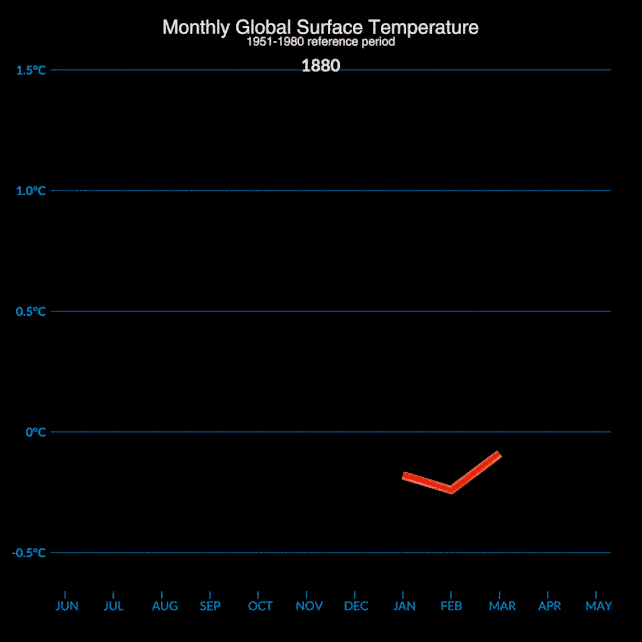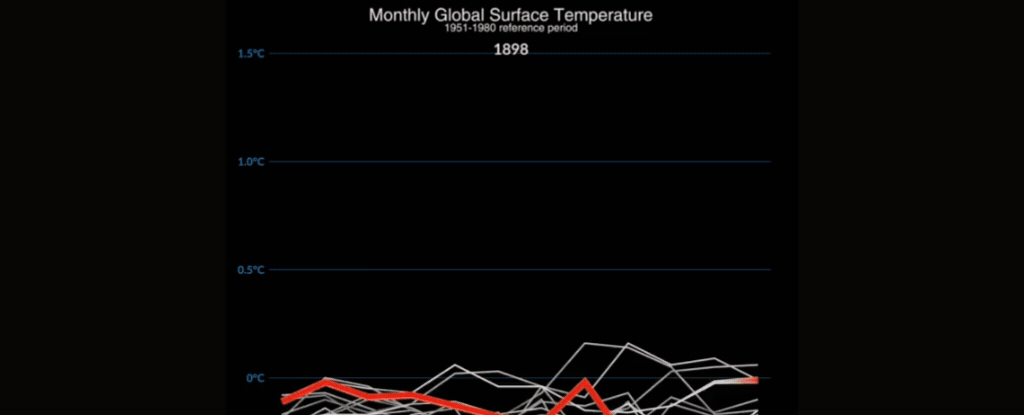Products You May Like
It’s not always easy to understand the current climate crisis in terms of simple, straightforward facts – not with so many variables at play – but here’s a worrying stat for you: every single month of the last 12 has set a new global temperature record for that month.
NASA has confirmed that May 2024 followed April, March, February, and January in hitting new highs in terms of average global temperatures. Before that, June through December 2023 had done exactly the same.
A streak like this has never been seen before for as long as records have been kept, and it’s an indication of the rapid warming that our planet is now experiencing. What’s even more sobering is that there’s worse to come.

“It’s clear we are facing a climate crisis,” says NASA administrator Bill Nelson. “Communities across America – like Arizona, California, Nevada – and communities across the globe are feeling first-hand extreme heat in unprecedented numbers.”
Records are being smashed all across the board, but there’s no cause for celebration. Last November, the global average temperature was more than 2 °C hotter than pre-industrial levels for the first time, while the US just recorded its warmest ever winter.
Despite the evidence that our planet’s climate is shifting drastically, humanity is pumping out more greenhouse gas emissions than at any point in history. We’re hurtling towards a climate cliff edge and showing no signs of slowing down.
There’s no doubt this is a trend, either. As NASA points out, the last 10 consecutive years have been the warmest 10 since we started keeping records at the end of the 19th century. Before this new year-long streak, the hottest run happened between 2015 and 2016, lasting seven months.
frameborder=”0″ allow=”accelerometer; autoplay; clipboard-write; encrypted-media; gyroscope; picture-in-picture; web-share” referrerpolicy=”strict-origin-when-cross-origin” allowfullscreen>
“We’re experiencing more hot days, more hot months, more hot years,” says Kate Calvin, chief scientist and senior climate advisor at NASA. “We know that these increases in temperature are driven by our greenhouse gas emissions and are impacting people and ecosystems around the world.”
A strong El Niño weather pattern that started early in 2023 is likely to have driven some of these high temperatures, and the signs are that as it wanes, we might see an end to month after month of record-setting temperatures, at least for now.
Tens of thousands of meteorological stations and instruments – spread across Earth on land, ships, and buoys – are used to take the readings that NASA publishes. The numbers are then processed to account for the distances between readings as well as other potential factors, such as urban heat islands.
If there is a positive to be found here, it’s that we’re getting better at tracking the global climate picture, at making sense of the data, and at predicting what might happen next. Now all we need to do is do something about it.
“We are providing critical climate data to better lives and livelihoods, and benefit all humanity,” says Nelson.
